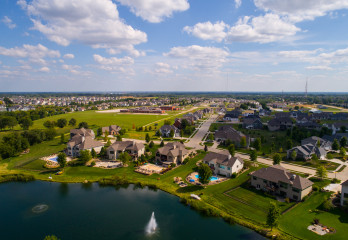Home inspections are more important than you might think!
When you’re buying a home, the last thing you want is to move in and discover there were issues lurking
in the shadows all along. That’s why the home inspection is a crucial step in the homebuying process. It’s
intended to peel back the layers and shed light on the not-so-obvious issues that could be detrimental to
your investment. To save yourself from a costly fiasco in the future, be on the lookout for any of these
major problems during your home inspection.
While it's not mandated by law, it’s in your best interest to get the standard inspections done when
purchasing a home. If the offer includes an inspection contingency, it gives you the opportunity to back
out of the deal or renegotiate, should you find any major issues.
Worrisome Water Damage
Water damage can wreak havoc on a home if not caught during an inspection. It can cause mold growth,
which is expensive and difficult to remediate. It can also create foundation problems that threaten your
home’s structural integrity. On the exterior, look for drainage problems such as water pooling near the
home or a flooded yard. Also, check for wood rot around door frames and windows. Inside the home,
watch out for peeling paint, swollen drywall, large cracks in ceilings and walls, and musty smells.
Structural Sabotage
Structural issues aren’t just costly to repair; they’re also dangerous. While some settling is natural,
significant shifting of the house can indicate your foundation wasn’t laid properly or that other
structural dilemmas have developed—look for these in an inspection. Common signs of structural
problems include cracks in walls and ceilings, cracks in the chimney or exterior masonry, sagging or
sloping floors, and doors and windows that won’t close.
Rundown Roof
A good roof should last you 20+ years, but if you spot signs during an inspection that it’s damaged or
nearing the end of its lifespan, proceed with caution. Look for the following red flags: curling, cracked, or
missing shingles; loose or rusted flashing; dark patches on the roof; mold and moss; a sagging roof; and
water stains in the attic or on the ceiling.
Eerie Electrical Wiring
When you see flickering lights in a movie, you know something bad is about to happen. When you see
lights that flicker, buzz or dim in your future home, it should strike the same fear in you. Fires caused by
faulty electrical wiring are a real threat, so a proper electrical inspection is a must. Some warning signs
to look for during an inspection include outlets that are warm to the touch or have scorch marks;
ungrounded receptacles; GFCI outlets that malfunction; a breaker or fuse box that’s emitting an odd
odor; and damaged or frayed wires. If you’re buying an older home with knob and tube wiring, most
insurance companies won't insure the home unless you get it replaced, which adds a substantial
expense to your homebuying budget.
Peculiar Plumbing
Poor plumbing is a health and safety concern, and there are several things to look out for during an
inspection. First, check out the type of pipes installed. Galvanized pipes, which are found in older
homes, corrode over time and can expose you to lead in your drinking water. Polybutylene (PB) pipes
also corrode and are prone to failure. Next, check for signs of leaks, which can cause mold growth, dry
rot, and structural damage to the home. And don’t dismiss something like low water pressure or a leaky
faucet; it could indicate a pipe blockage or that there are poorly sized pipes installed. Be sure to have
the sewer lateral checked during an inspection for root growth and other obstructions that prevent the
free flow of sewage away from the home and to the sewer main.
Pernicious Pests
No one wants unwanted visitors taking up residence in their new home. While some pests can be
mitigated with the help of an exterminator, it can be pricey (and a nuisance). More serious infestations,
like termites, should be an instant red flag during an inspection as they cause serious structural damage.
Other problem pests include carpenter ants, cockroaches, wasps, and mice, among others.
Now that you know the major things to look out for in a home inspection, you can shop for homes with
confidence. Are you ready to make your move? Reach out to us at Peoples Mortgage to discuss your
options!



